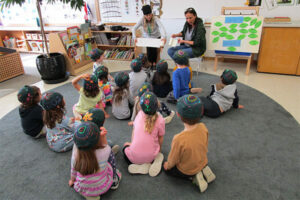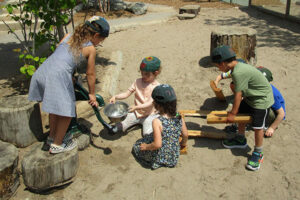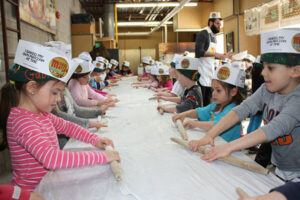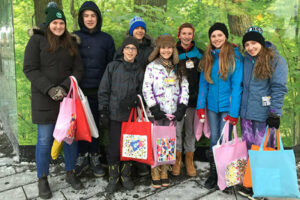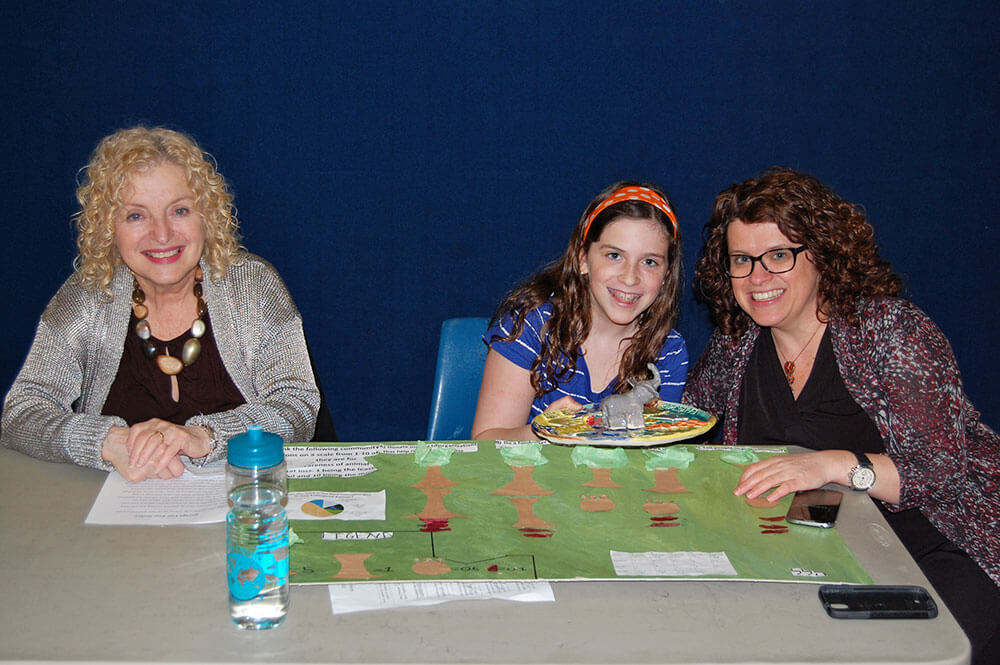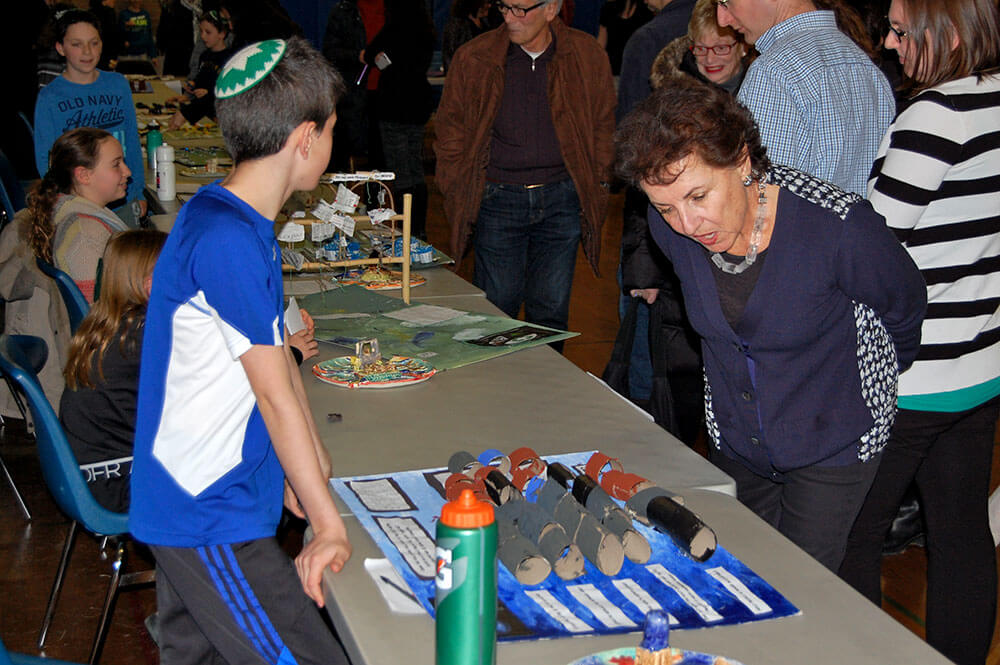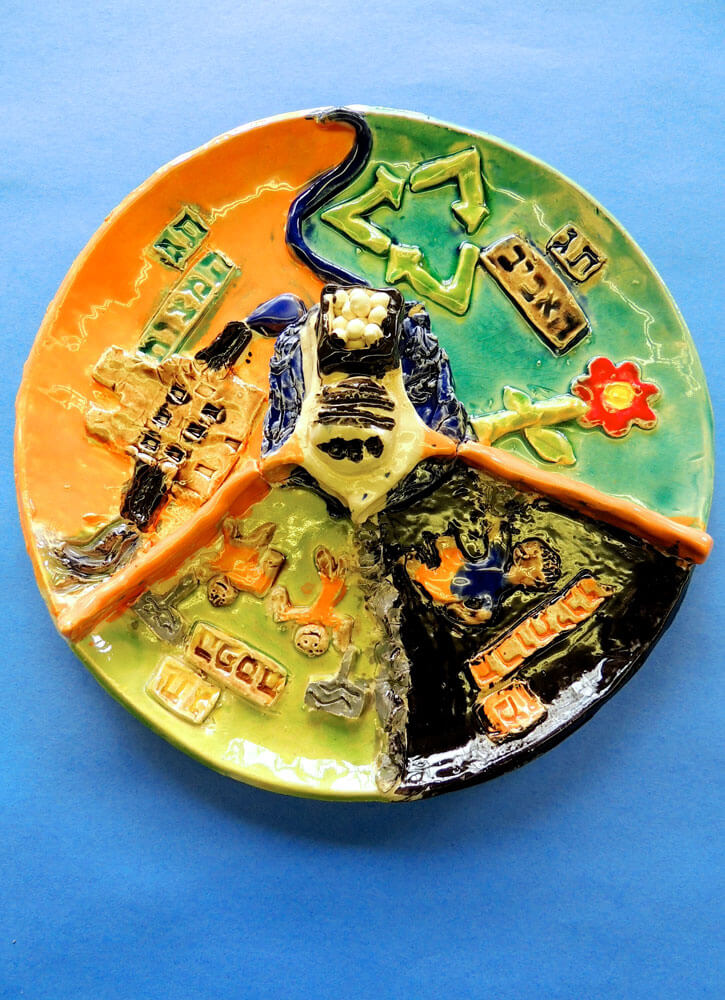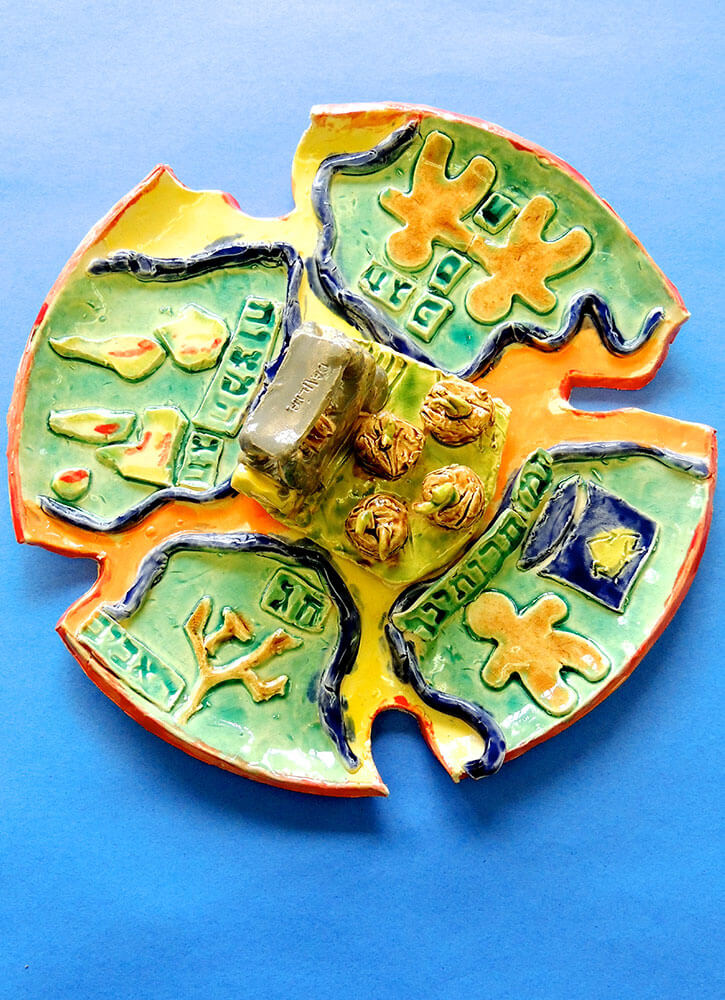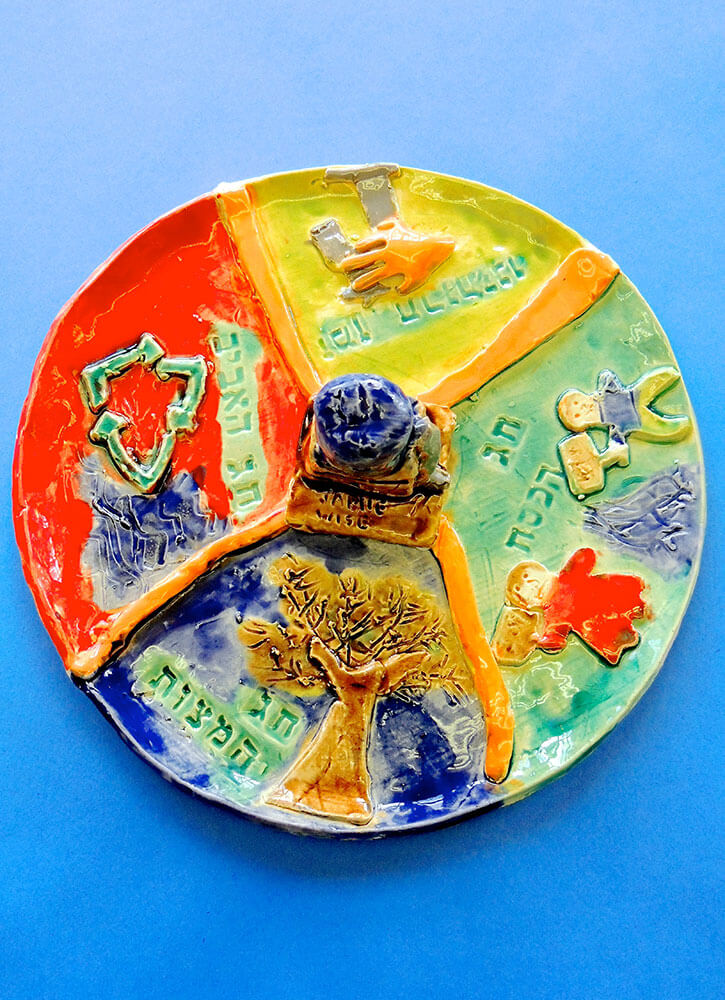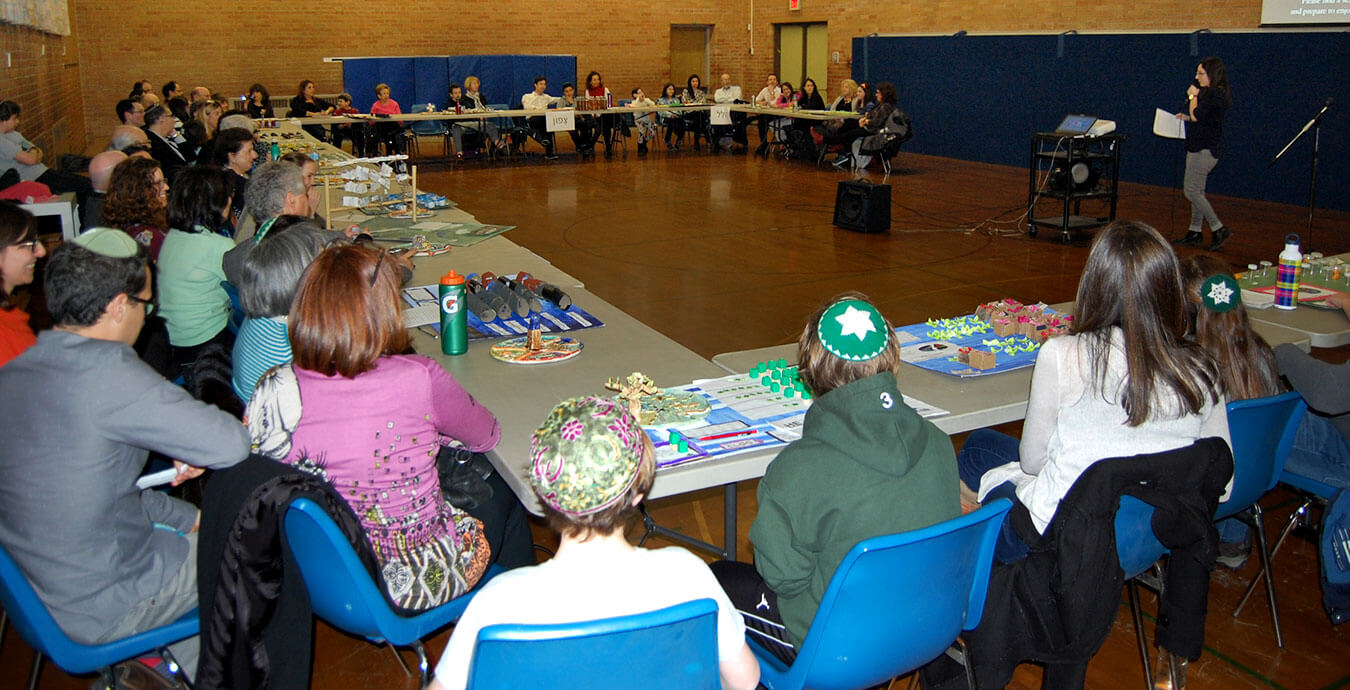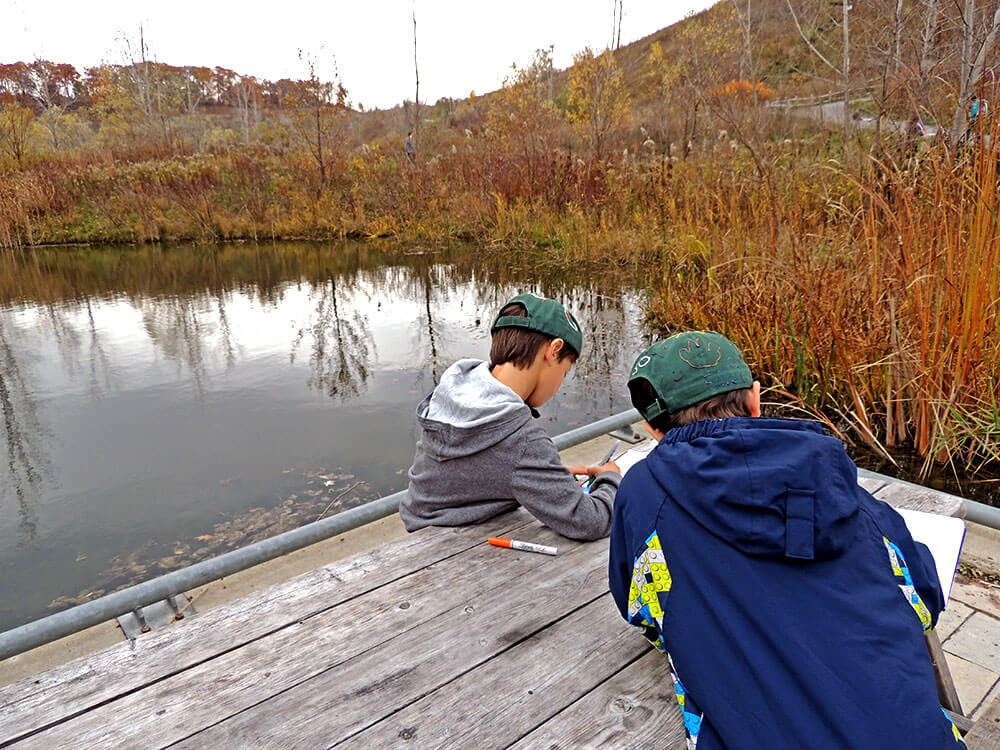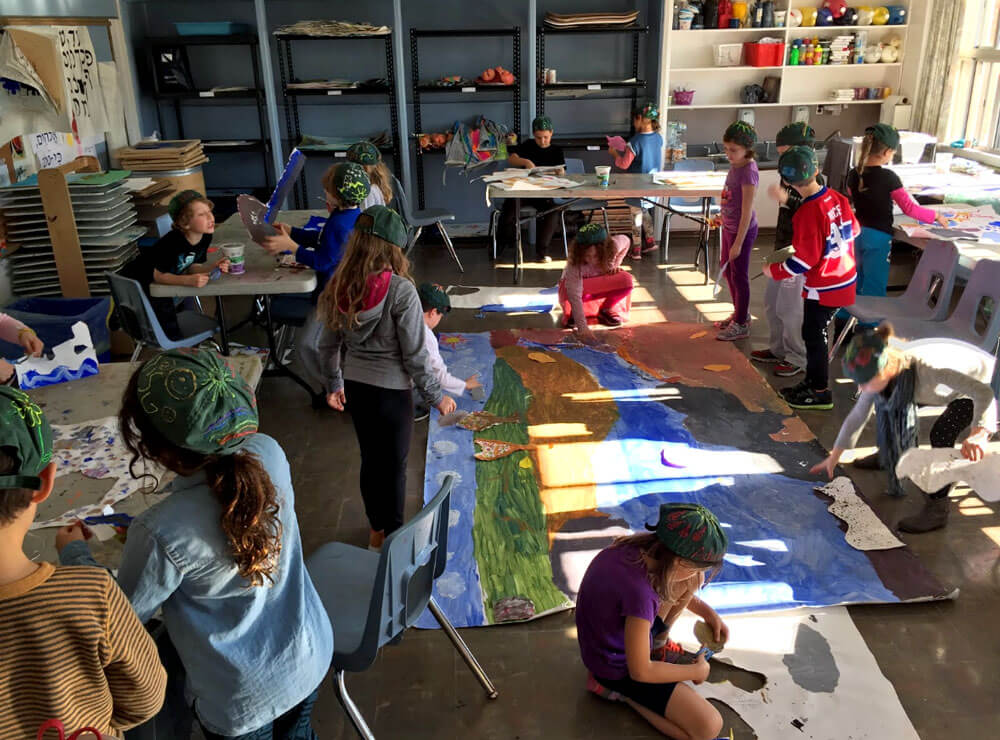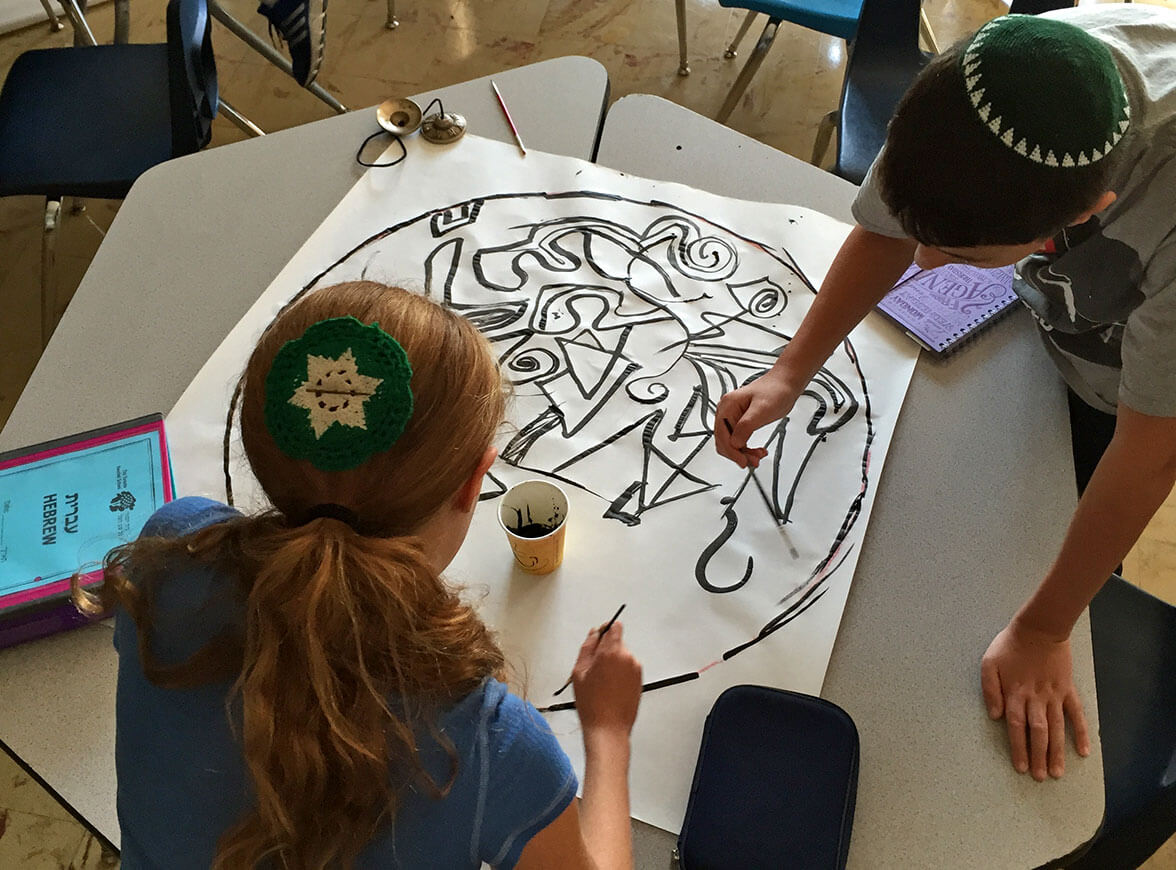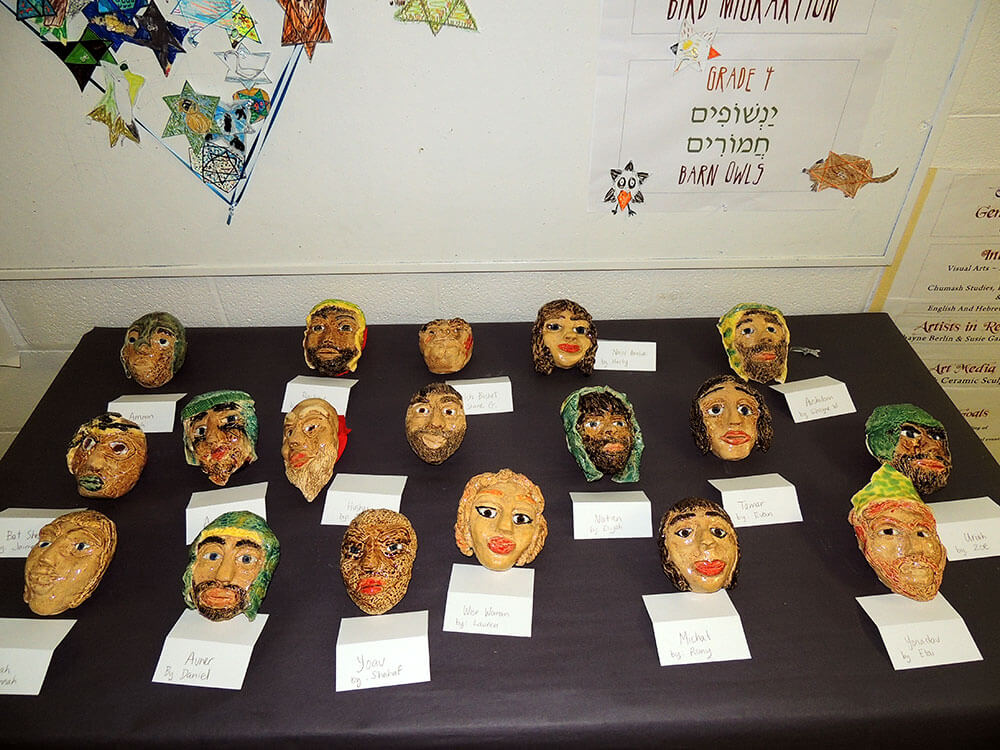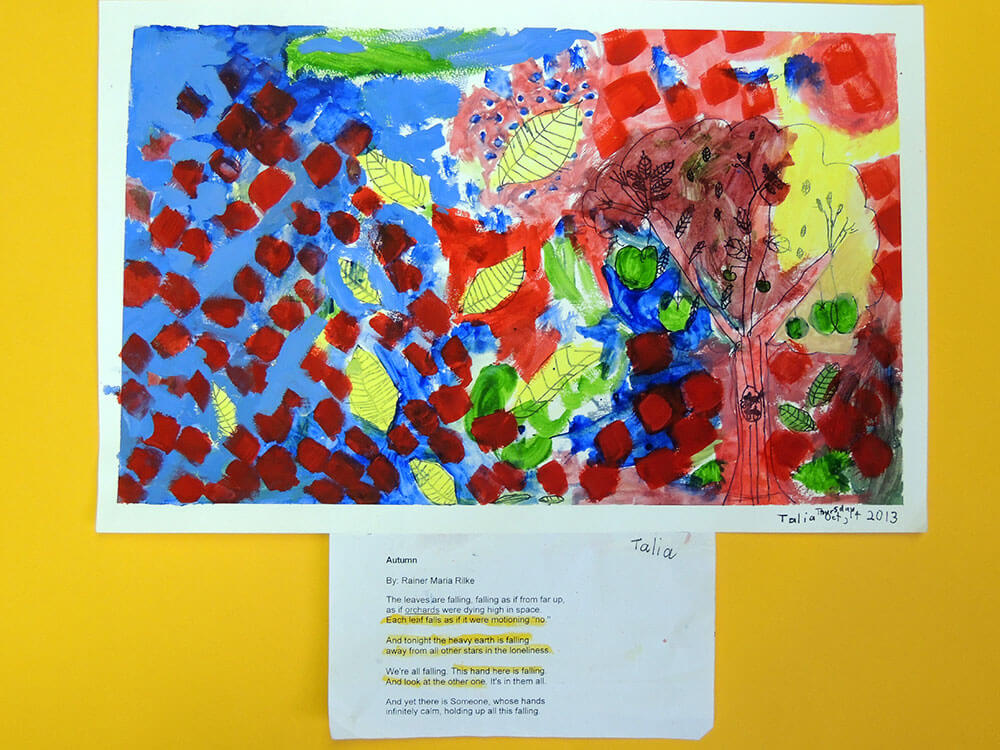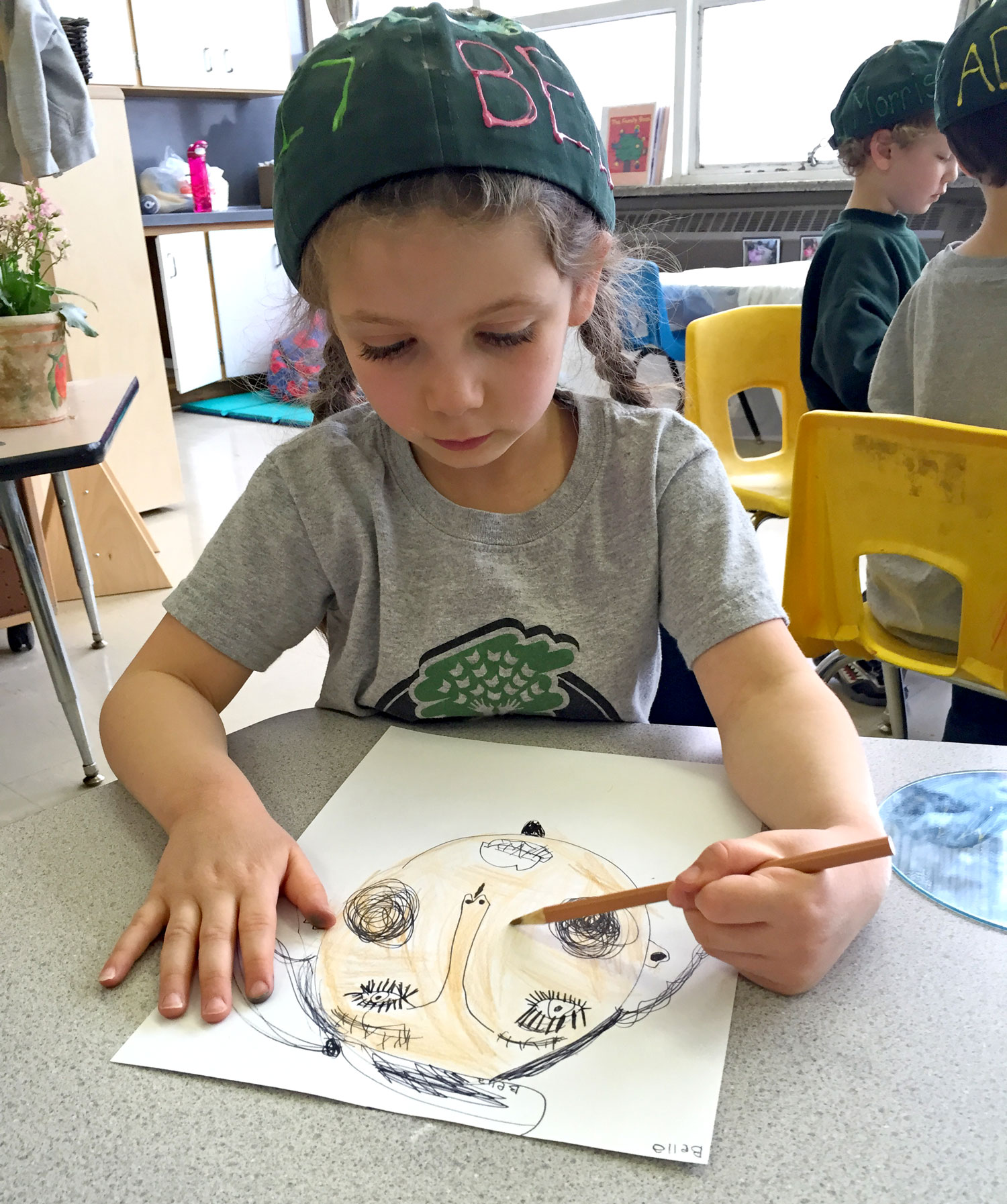- How We Teach

- First Column
- Second Column
- Third Column
- Case Studies

- First Column
- Second Column
- Culture & Community

- First Column
- Second Column
- News & Views

- Admissions

- First Column
- Second Column
- Support Us

- About

- First Column
- Second Column
- Parent Hub
- Attend an Open House
- Take a Tour
- Donate Now
- Calendar
- Blog
- 416-635-1876
- Search
Case StudiesLearning through the ArtsMeet Judith Leitner, co-founder of The Toronto Heschel School and Director of Integrated Arts since 1996.
What does "arts-based" mean?
Our school is neither an art school, nor a performing arts school. "Arts-based" puts focus on educational process not product. We teach through the arts, using music, dance, drama, visual arts, and storytelling as tools to develop a student's understanding of the curriculum.
The arts underpin the learning in all subjects. For example, the Grade 6 "Eco-Seder" mines the Passover Haggadah for environmental themes. Beyond celebration of the Exodus, Pesach is also a festival of spring, renewal, memory and hope. A package of texts relates to each section of the Haggadah with thematic introduction, a scientific article with questions, and a math activity in data management. Students prepare the "Eco-Seder" in Language Arts, Science, Mathematics and Visual Arts classes, and ultimately present the relationship between Pesach and the environment through an installation that includes a sculpture, a three dimensional math graph, and their "Artist Statement." They set up a sculpture gallery of their installations in the order of the Hagaddah, standing by their work to explain their Eco-Seder to their peers and parents.






How does learning through the arts enrich education?
When the learning is experiential and challenging, the learning process is etched in one's memory. Learning through the arts enables children to bridge knowledge and transfer thinking skills between disciplines, nurturing what Professor Howard Gardner calls "the integrative mind." Learners have enriched opportunities to self-express, pose questions and build self-confidence. (See H. Gardner, Five Minds for the Future, 2006).


Why are aesthetics important to your teaching?
An appreciation for, and understanding of, creating one's personal sense of beauty are fundamental to us as human beings. Aesthetics offers an excellent forum for self-expression and self-understanding. But, we are not discussing 'beauty'. Point of view and tolerance for others' ways of seeing are paramount to our educational philosophy, just as experiential learning is core to the structure of our curriculum. When children engage in art-making of all kinds, they experience limitless opportunities to express their point of view and tolerate others' ways.


What does arts-based learning look like?
It is a perpetual and evolving display. Artworks are always on view; as work-in-progress and complete. Display advocates for ongoing progress, effort and achievement, children teaching children. Signage accompanies the displays, so that as students walk the corridors they see titles, interdisciplinary integration, learning goals, descriptions of artful thinking and listed resources such as Chumash or Talmudic texts, math formulae, authors and artist statements.


What impact does arts-integration have on your students?
Self-esteem comes with excelling. When children believe in the possibility that they can excel, they sense the opportunity they each hold for personal statement and creative power. Excelling means understanding one's own process as positive, even while work is incomplete or an idea not fully developed. Excelling means finding new perspectives, seeing 'mistakes' as superb windows of opportunity for learning and for reflection, which is part of the natural process for all creative thinkers. I see excellence when I see effort that goes beyond self-perception, with a willingness for creative risk. Self-esteem comes with a sense of accomplishment, both personal and as part of a community of learners.
This interview first appeared in THINK, Issue #8, Fall 2010 Fall/Winter 2014, Daniel Abramsohn, “Life Lessons and the Art of Portraiture” Fall 2015, Judith Leitner, “Evolution of the Aleph”

